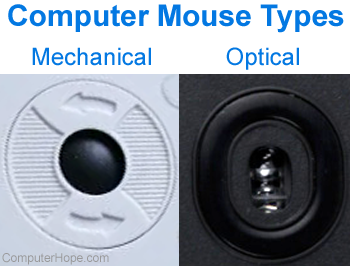Optical mouse

The optical mouse is a computer mouse introduced by Microsoft on April 19, 1999, that utilizes LEDs (light-emitting diodes) or a laser to track or detect movement. These differing technologies are identified by examining the bottom of the mouse. As shown, the optical-mechanical mouse has a ball, and the optical mouse has a light instead.
How does an optical mouse work?
An optical mouse also has a tiny low-resolution camera that takes a thousand or more pictures every second. In the camera, the CMOS (complementary metal-oxide semiconductor) sensor sends a signal to a DSP (digital signal processor). The DSP can then analyze each picture for pattern and light changes, and then moves the mouse cursor on your screen.
Optical mouse disadvantages
Optical mice don't work as well on reflective surfaces such as glass tables, and require a mouse pad to work properly. However, in comparison to optical-mechanical mice, optical mice are a better solution. If the optical mouse is wireless, it requires batteries.
Why is the mouse light red?
Although not all optical mice use red, it's the most common LED used because it's often the cheaper diode and because the photodetectors are more sensitive to red light.
Are all optical mice wireless?
No. Optics is only the technology used to detect movement. There are both wireless and wired versions of optical mice.
Further optical mouse history
Before Microsoft introduced their mouse in 1999, there were many different companies and inventors who had earlier styles of optical mice. In the 1980s, Richard Lyon and Steve Kirsch both independently created their versions of an optical mouse that required a special surface to move the cursor.
